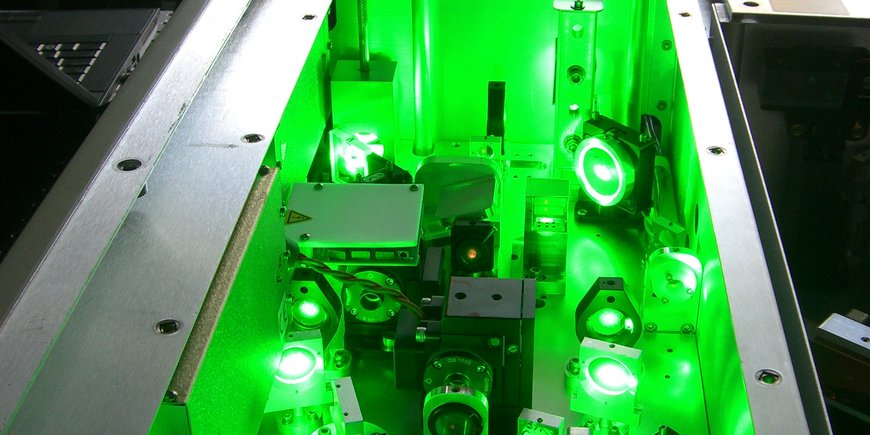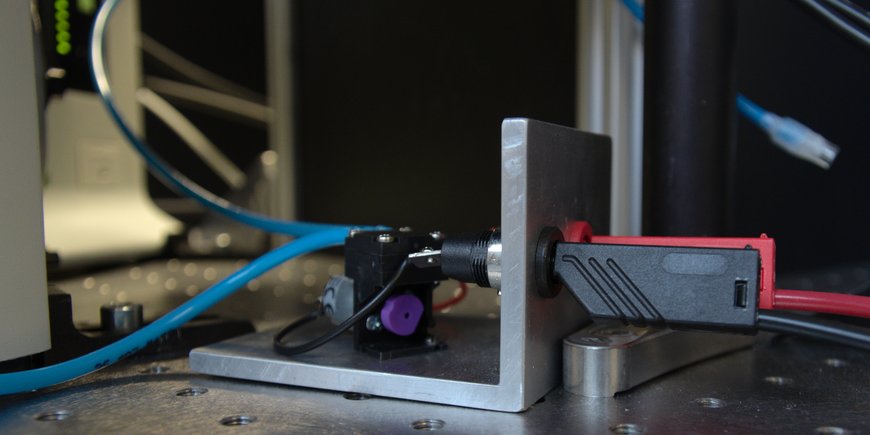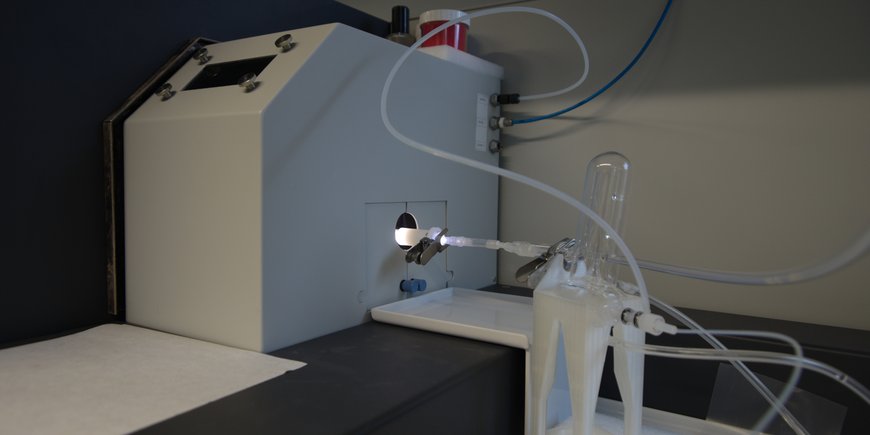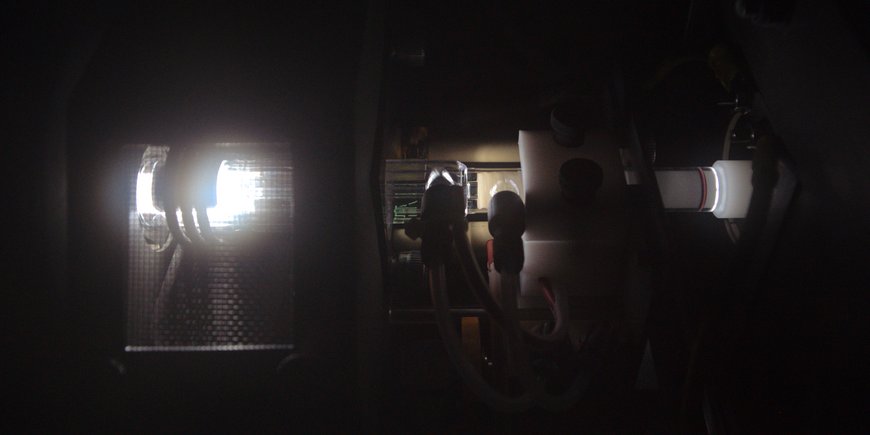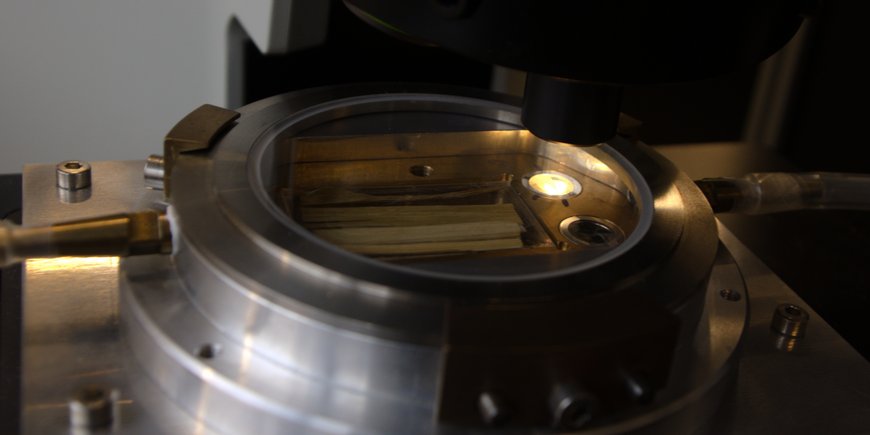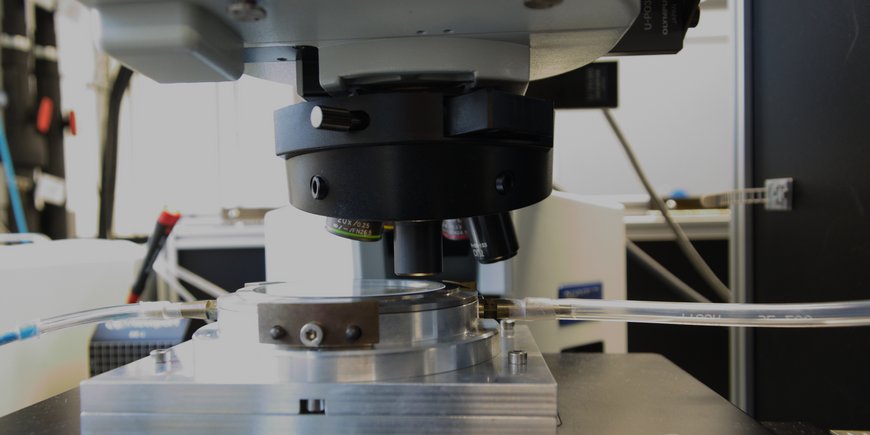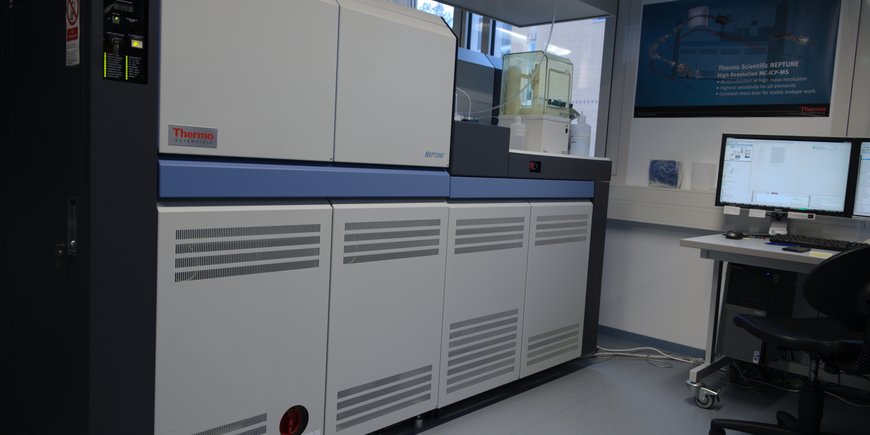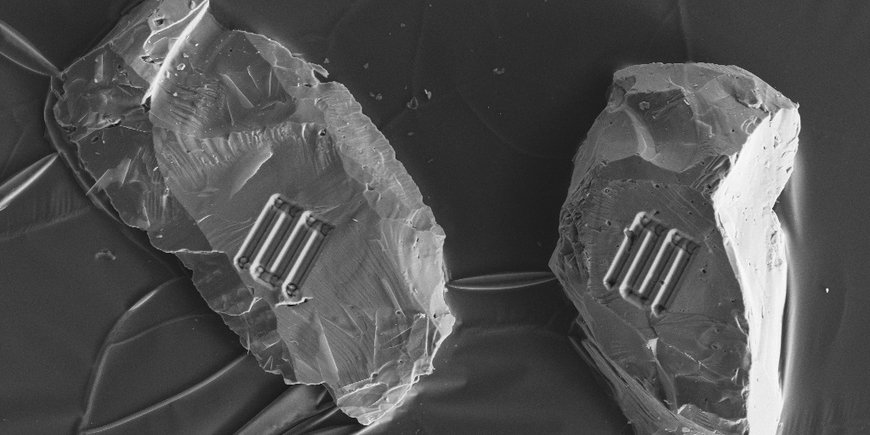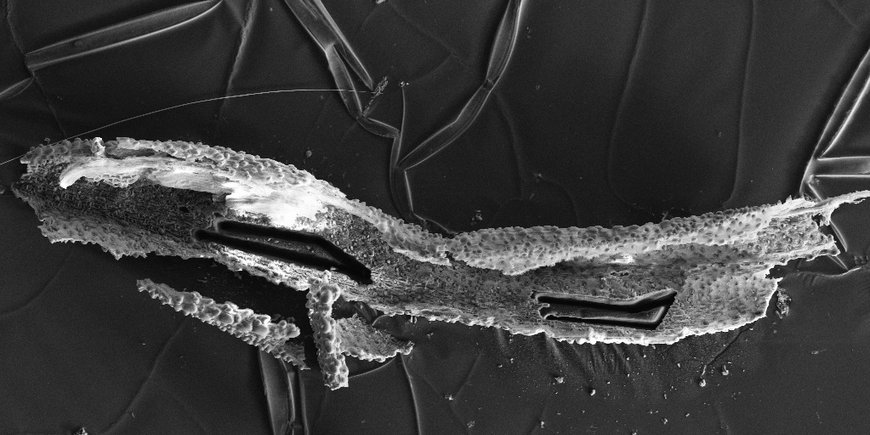The UV fs laser ablation lab at HELGES is a state-of-the-art facility for the in situ micro-scale analysis of isotope ratios and element concentrations in a wide range of solid geological and environmental materials (rocks, minerals, soils, meteorites, biogenic silica- (phytoliths) and calcium carbonate-producing organisms).
Femtosecond lasers ablate with minimal thermal heating to the surrounding area of the crater due to the short laser pulse length compared to the photon relaxation time, i.e., the laser energy can be deposited into the material before it can thermally equilibrate. This predominantly non-thermal ablation minimises laser-induced fractionation and matrix dependence.
Our LA system (GFZ Fem2) consists of a femtosecond solid-state laser (Newport Spectra Physics Solstice, femtosecond seed laser with 100 fs, Spectra Physics MaiTai and a Nd:YLF pump laser with 100 ns, Spectra Physics Empower-30 in a regenerative amplifier). The resulting laser beam has a pulse width of ~100 femtoseconds, operates at a wavelength of 196 nm, provides ablation rates between 1 to 1000 Hz and spot sizes between 15 and 30 µm. Details of the setup are reported here.
The laser is coupled to a commercial microscope (BX61 from Olympus), which offers a motorised 3D sample stage. The software fully controls the analysis (spot, raster, and line scans) and synchronises the laser with the (mass) spectrometers (Thermo Neptune MC-ICP-MS, iCAP-Qc ICP-qMS or Varian ES 720). Currently, the methods are established for analysis of stable metal and metalloid isotope ratios of B, Mg, Si, S, Fe in a wide range of matrices.
Laser ablation split stream (LASS)-ICP-MS for simultaneous stable isotope ratio and major, minor and trace element analysis
We have developed analytical routines to obtain stable isotope ratios (B, Mg, Si, S, Fe) with simultaneous major, minor and trace element determination from a single area of typically 20 to 100 µm. The laser ablation system is simultaneously coupled to a multi collector inductively coupled plasma mass spectrometer (MC-ICP-MS, Thermo Neptune) for isotope ratio analysis and to a inductively coupled plasma quadrupole mass spectrometer (ICP-qMS, Thermo iCAP-Qc) for element concentration measurements. Further details on the LASS method are given here.
Sample Preparation
Samples for laser ablation analyses must fit into the laser ablation cell. Samples can be epoxy grain mounts, thin sections, rock slices, pressed powder pellets or glass beads (we utilise a Ir- or W-strip heater for flux-free fusion of powder samples, see here). Compared to other microanalytical methods (EMPA, SIMS), the demands on sample surface quality are less demanding for laser ablation analyses. In principal, any sample that is stable in a continuous stream of He gas is suitable. Solid samples with a polished surface are preferred, since they enable a better selection of the analysis spots in reflected or transmitted light microscope imaging.
Routinely, the following geometries are supported using the existing sample holders:
- petrographic thin sections 28 x 48 x 1.5 mm
- rectangular blocks max. 22 x 42 mm, max. 14 mm thickness
- round thin sections or epoxy mounts:
• ø 12.5 mm and 12.7 mm, thickness 0.15 - 14 mm
• ø 25.4 mm and 26.3 mm, thickness 0.15 - 14 mm.
If necessary, adaption to more irregular sample geometries can be custom made using an inhouse 3D printer.
Access to the lab
Nearly all work conducted in the GFZ HELGES lab falls into one of two categories: (1) approved collaborative projects that will lead to publications in international scientific journals, and (2) research projects within the GFZ Earth Surface Geochemistry group, including development and improvement of analytical methods. All scientists wishing to use our facility or request sample analyses must submit an analysis application form. Because our laboratory space and staff capacities are limited, we need to evaluate your application in an internal review process. We therefore kindly ask you to fill the application form and provide us with further information about the project, samples and analyses. Please send the application form to the indicated lab contact person. Please note that we are specialized in the above-mentioned isotope systems and we are not a geochronology laboratory.
Application forms and terms of conditions:
Application for Stable Metal Isotope Measurements
Application for Cosmogenic Nuclide
Terms of conditions HELGES


